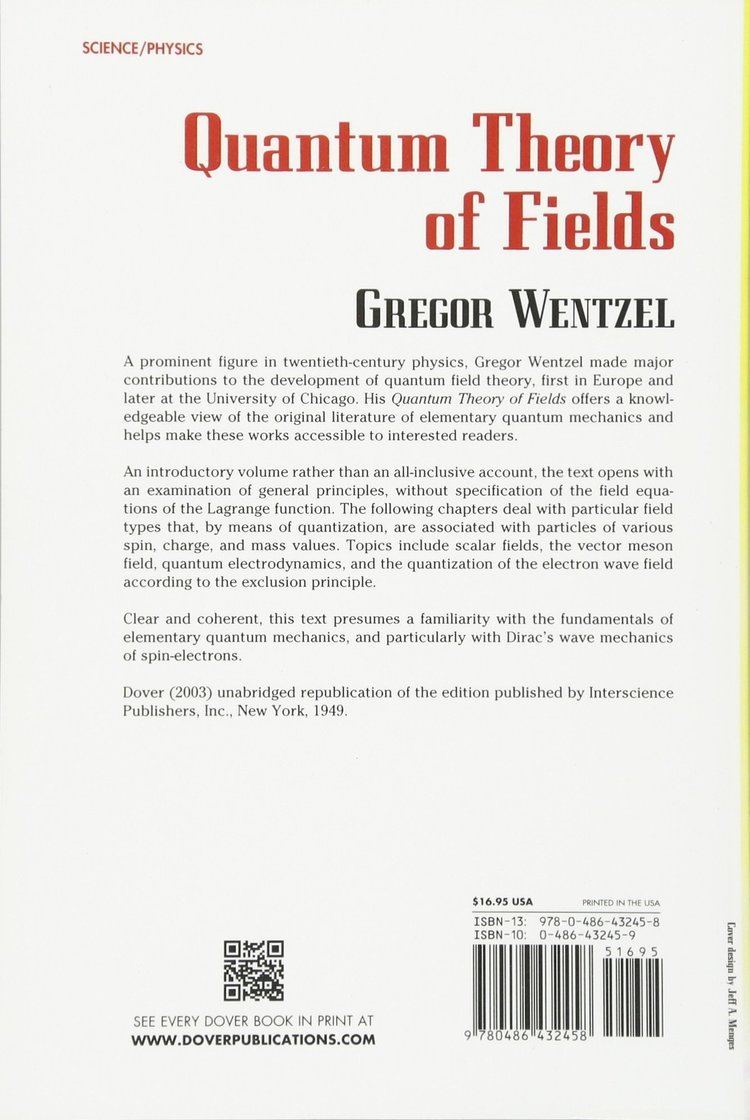Nationality German Books Quantum theory of fields | Name Gregor Wentzel Role Physicist | |
 | ||
Institutions Ludwig Maximilian University of MunichUniversity of LeipzigUniversity of ZurichUniversity of Chicago Alma mater University of GreifswaldLudwig Maximilian University of Munich Doctoral students Valentine BargmannMarkus FierzBurt FriedRes JostNicholas KemmerFelix VillarsKlaus Ruedenberg Known for Wentzel–Kramers–Brillouin approximationQuantum field theory Education Albert Ludwigs University of Freiburg, Ludwig Maximilian University of Munich, University of Greifswald Similar People | ||
Gregor Wentzel (February 17, 1898 – August 12, 1978) was a German physicist known for development of quantum mechanics. Wentzel, Hendrik Kramers, and Léon Brillouin developed the Wentzel–Kramers–Brillouin approximation in 1926. In his early years, he contributed to X-ray spectroscopy, but then broadened out to make contributions to quantum mechanics, quantum electrodynamics, and meson theory.
Contents
Life and education
Gregor Wentzel was born in Duesseldorf, German, as the first of four children of Joseph and Anna Wentzel. He married Anna "Anny" Pohlmann in 1929 and his only child, Donat Wentzel, was born in 1934. The family moved to the USA in 1948 until he and Anny returned to Ascona, Switzerland in 1970.
Career
Wentzel began his university education in mathematics and physics in 1916, at the University of Freiburg. During 1917 and 1918, he served in the armed forces during World War I. He then resumed his education at Freiburg until 1919, when he went to the University of Greifswald. In 1920, he went to the Ludwig Maximilian University of Munich (LMU) to study under Arnold Sommerfeld. Wentzel was awarded his doctorate in 1921 and completed his Habilitation in 1922. He remained at LMU as a Privatdozent until he was called to the University of Leipzig in 1926 as an extraordinarius professor of mathematical physics. In 1926, Wentzel, Hendrik Kramers, and Léon Brillouin independently developed what became known as the Wentzel–Kramers–Brillouin approximation, also known as the WKB approximation, classical approach, and phase integral method. He became ordinarius professor in the Chair for Theoretical Physics, at the University of Zurich, when he succeeded Erwin Schrödinger, in 1928, the same year Wolfgang Pauli was appointed to the ETH Zurich. Together, Wentzel and Pauli built the reputation of Zurich as a center for theoretical physics. In 1948, Wentzel took a professorship at the University of Chicago. He retired in 1970 and went to spend his last years in Ascona, Switzerland. In 1975, he was awarded the Max Planck Medal.
